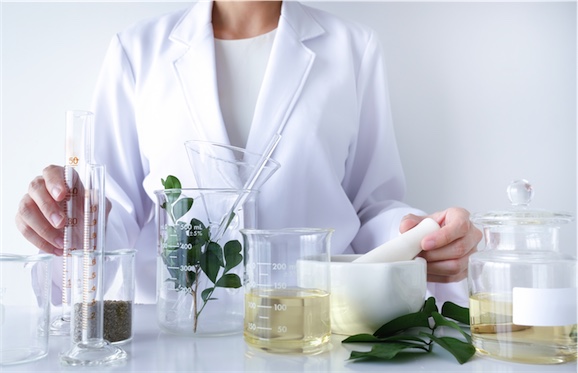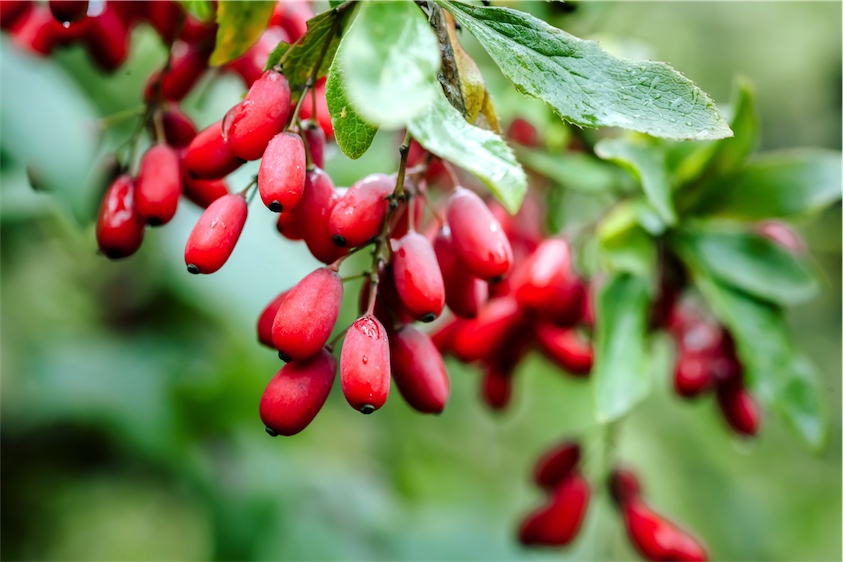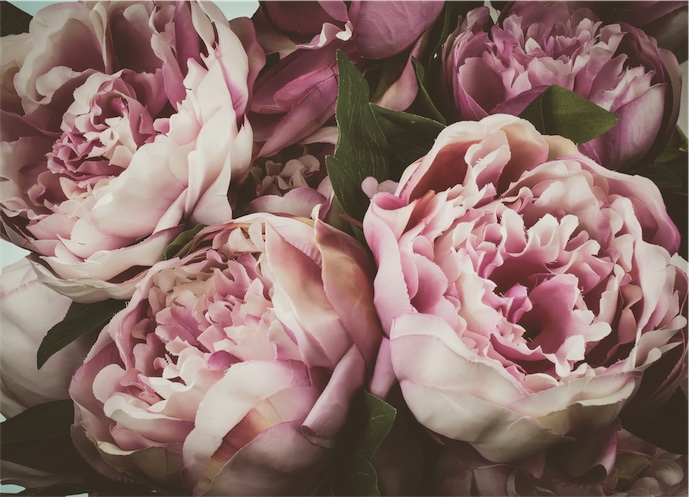Herbal medicine has much to offer acne sufferers. Used internally as either tincture, teas or tablets herbs help rebalance and tone body systems correcting the underlying drivers of acne.
Traditionally herbs supporting digestion, detoxification
In my clinical practice, I use predominantly liquid herbal blends. This provides the flexibility to create an
The following list is by no means exhaustive but here are some of my
** If you are planning on using herbal medicine for your acne I recommend you to work with a qualified Herbalist or Naturopath. This is especially important if you are taking medications or are pregnant or breastfeeding.
Herbs for Detoxification & Digestion
Dandelion root
Many gardeners would consider dandelion (Taraxacum radix) a weed but this persistent little plant it one of the most effective, yet gentle herbs to support digestion and detoxification. Dandelion’s bitter taste will get your digestive juices flowing including bile your internal laxative. It also helps the kidney to function more efficiently.
Dandelion root is readily available as a tea. Be sure to steep it for at least 15 minutes to get the most benefits from it.
In standard doses, dandelion is safe in both pregnancy and breastfeeding.
Yellow dock
Yellow dock (Rumex
You could be slightly constipated or have looser stools but never feel completely “evacuated”. You might also get sharp colicky pains right before you need to go to the bathroom which go as soon as you’ve done your business. Unlike some of the stronger herbal laxatives, like Senna, Yellow dock is mild and not habit forming.
Yellow Dock is also reported to help balance blood sugar issues by curbing appetite. This would also be helpful in acne as it can be made worse by overconsumption of simple carbs.
Barberry
Barberry (Berberis vulgaris) is another herb I find effective for a particular type of acne. It’s also one you won’t find in off the shelf formulations.
The bark is part of the plant I use, but traditionally the vibrant red berries are also used.
I would consider this herb for people exposed to a lot of chemicals (including women on hormonal birth control) and those regularly consume alcohol. It supports the liver to clear toxins and increase the nutrients you absorb from your food.
Research in animal models also indicates it may reduce/balance the secretions of the sebaceous glands. An excellent benefit in acne!
A study on teenagers in Iran (using the berries) saw an average 42% reduction in acne lesions after using Barberry for four weeks. (insert reference)
Use under the supervision of a herbalist. Barberry is not suitable for pregnant or breastfeeding women.
Burdock
Burdock (Arcticum lappa) is indicated where you have acne, with another chronic dry skin conditions such as a dry, flaky scalp. It was considered traditionally to “balance the oils” in the body. The acne lesions tend to be single large lesions which never seem to come to a head.
It can also help with balancing blood sugar by reducing cravings for sweets.
Like dandelion (which it combines very well with) it is also a bitter and stimulates digestive secretions.
Herbs for hormonal balance
It’s important to remember that herbs and not hormones or a direct replacement for them in the way the oral contraceptive pill is. Herbs help balance and support your body to
Chaste tree
Although often considered a female remedy, Chaste Tree (Vitex agnus-castus) is useful in supporting cystic acne in both men and women.
I find this herb to be frequently over or wrongly prescribed, due to the misconception that it is herbal progesterone. It can help support progesterone but only in those women who tend towards overt or subclinical high prolactin.
Aside from testing prolactin, signs that Vitex may be beneficial are cyclic headaches, premenstrual syndrome
It may take up to 3 months to see the benefits of this herb.
If you are pregnant or breastfeeding work with a herbalist if you are considering using this herb.
Peony and Licorice
White Peony (Paeonia
Peony helps balance
The combination of Peony and Licorice is a herbal treatment for the type of polycystic ovarian syndrome (PCOS) where excess androgens are an issue.
Peony also helps reduce cortisol and is useful to support the nervous system if stress is an issue.
Peony is generally considered a safe herb. However, cautions exist for extended use of Licorice if high blood pressure is an issue. In this instance ensure you are using it under the care of a qualified practitioner.
Rosemary
Rosemary is a familiar culinary herb which has many benefits in acne.
It helps
Rosemary stimulates metabolism and helps
It is also a potent antioxidant.
Sarsaparilla
Sarsaparilla (Smilax
It’s native to Central America, and the root is the part of the plant used medicinally. Sarsaparilla is also used to make a sweet beverage.
I love it for chronic skin conditions such as psoriasis, cystic acne and it can clear up tinea when used topically.
Herbalist Dorothy Hall used sarsaparilla to balance
Herbs to reduce inflammation and balance blood sugar
Turmeric
I know it seems like turmeric (Curcuma longa) is good for everything but the reason for its panacea reputation because it’s very effective at targeting the molecules which produce inflammation. Many health conditions such as PCOS, digestive issues and blood sugar dysregulation have inflammation at their core.
Another action which makes turmeric useful in acne include working as an antioxidant – specifically reducing lipid peroxidation which is a driver of acne lesions.
St Mary’s thistle
St Mary’s thistle (Silybum marianum) helps protect and restore liver function. It is also a potent antioxidant. I consider using this herb for people who have recently completed a course of Roaccutane, a drug which can impair liver function in some people.
Cinnamon
Another culinary herb, cinnamon is helpful to control blood sugar and is used as a supportive treatment in PCOS.
Using cinnamon in your food is very achievable. A ½ teaspoon a day will have benefits. Add to porridge,
Herbs to manage stress
Stress and an overactive nervous system are not recommended ingredients for healthy skin. There are many, many herbs which can help here. I try to match the person
Passionflower, Skullcap Lemon Balm, Holy basil (Tulsi), chamomile which can be used daily in teas. Withania, Rhodiola and Schisandra and Green Oats are also tonics for the nervous system.
Using herbs successfully for acne
Choosing the right blend for your acne
Acne rarely has only one single driver and I find combination formulas to be more effective. When herbs are combined, you get a synergistic benefit. One plus one equals three. Combining dandelion and burdock gets better results than either one on its own. Work with a Herbalist or Naturopath who can take a comprehensive case history and choose the herbs best suited to you.
Use quality herbs
In the
The right dose
A bit like Goldilocks, you don’t want too much or too little. You need the right dose for your vitality, age
Timing is everything
Although some people might refer to them as magic potions, herbs are gentle. But they have profound effects over time. In my clinic, patients see improvements within a month, but the best results come with 3-6 months of use.
This post is part 3 of a 5-part series on acne treatment.
Part 1 Acne: Discover the underlying cause
Part 2 What diet should I use to help my acne?
Part 4 Nutritional supplements for acne
Part 5 What you need to know about Roaccutane (and what your dermatologist might not have told you.

Need help with your acne?
Norelle Hentschel is an experienced Naturopath with a clinic in Stones Corner, South East Brisbane and also offers Telehealth consults Australia wide. She enjoys supporting her clients to reach their health goals.
Want more articles like this?
Join us at Your Skin Remedy – the monthly missive for healthy skin from the inside out. Practical, actionable, and informative. Your clear, glowing skin starts here.
PS. Your inbox real estate is precious. Your Skin Remedy is pitch and promo free. I promise. One email a month — that’s it.



